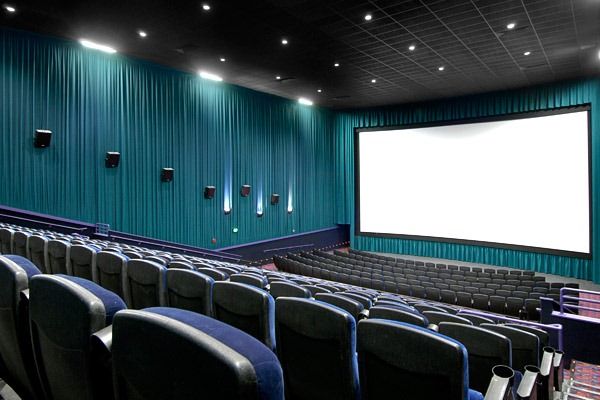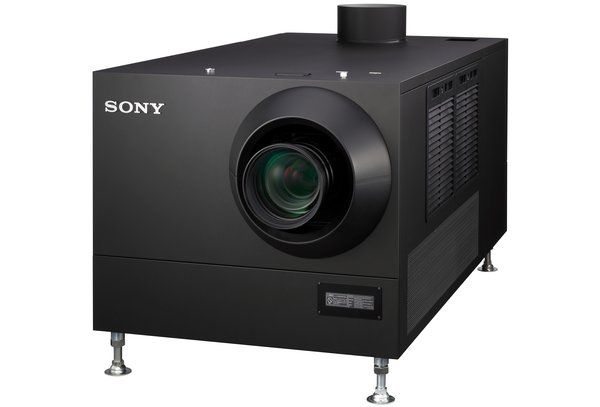While theater owners moan and make empty threats in response to the studios' premium VOD Service, they're doing nothing to make the moviegoing experience any better for patrons. The Boston Globe's Ty Burr discovered that theaters are bringing the poorly-lit experience of 3D to their 2D movies.  Theaters are misusing their digital project equipment and leaving in the 3D lens when they should be swapping it out if they're showing a 2D movie. Burr found the issue not only at the AMC Loews Boston Common on Tremont Street but also at Regal Fenway where regular brightly lit 35mm prints of Water of Elephants and Madea's Big Happy Family where playing against their own poorly-projected versions. The problem across theater chains appears to be Sony's new 4K Digital Projectors and leaving them on when playing a 2D filmHit the jump for more on how theaters are taking your money and not giving you the quality picture you paid for. A professional projectionist explained the problem with the lenses:
A professional projectionist explained the problem with the lenses:
He explains that for 3-D showings a special lens is installed in front of a Sony digital projector that rapidly alternates the two polarized images needed for the 3-D effect to work.
“When you’re running a 2-D film, that polarization device has to be taken out of the image path. If they’re not doing that, it’s crazy, because you’ve got a big polarizer that absorbs 50 percent of the light.’’
So how can you tell if you're getting the correct brightness level?
There's an easy way to tell. If you’re in a theater playing a digital print (the marquee at the ticket booth should have a “D’’ next to the film’s name), look back at the projection booth.
If you see two beams of light, one stacked on top of the other, that’s a Sony with the 3-D lens still in place. If there’s a single beam, it’s either a Sony with the 3-D lens removed or a different brand of digital projector, such as Christie or Barco.
So why aren't theaters fixing the problem? For the same reason they don't do anything about patrons who are chatty or text on their cell phones: it takes time, money, and manpower.
James Bond, a Chicago-based projection guru who serves as technical expert for Roger Ebert’s Ebertfest, said issues with the Sonys are more than mechanical. Opening the projector alone involves security clearances and Internet passwords, “and if you don’t do it right, the machine will shut down on you.’’ The result, in his view, is that often the lens change isn’t made and “audiences are getting shortchanged.’
First off, if you're not listening to a movie projectionist named "James Bond", you've already failed on so many levels. But no one is asking theaters to retrofit theaters or change the entire way they do business. The fix is a couple of competent employees who should get paid a little extra for their expertise and skill with the 4K projectors (pictured right) so they can do what movie theaters were designed for: showing movies. While theaters make their business at the concession stand, no one is going to the snack bar of an AMC or a Regal Cinemas for the cuisine.
When reached for comment, both AMC and Regal, the nation's largest theater chains, were half-hearted in their explanations. Here's what a spokesman for Regal had to say:
"Patron response has been overwhelmingly positive toward digital cinema and all of the associated entertainment options provided by this technology."
Really? Are people going up to the managers and high-fiving them for the awesome projection job? I'd like to see that.
And here's a comment from Dan Huerta, Vice President of Sight and Sound for AMC:
"Obviously, if we know there’s a 2-D movie that’s going to be shown through a 3-D lens, we would have to make sure that the manager or a technical person could make the call."
So it's not the company's fault. It's the responsibility of the manager or "technical person" (which is what I'm sure it says on their business card), and to an extent, I agree with that. But it looks like neither company is willing to address the problem on a wide scale and are either pretending it doesn't exist or passing the buck on to individual managers (as if the managers didn't take their orders from corporate).
The obvious solution would be for patrons to complain every time they see an under-illuminated picture. I've pretty much given up on getting theaters to project 3D films at the correct luminosity. The bulbs are expensive, theaters are cheap, and they don't expect the majority of audiences to know any better. But when it comes to 2D, this is a problem that comes down to sheer laziness. Nothing new has to be purchased. The expertise costs money but so does any profession. Why promote incompetence?
And yet consumers have to shoulder some of the blame because they may not notice or even care. Also, do you really want to get out of your seat, track down the manager, and stop the movie so they can adjust the lens? The better solution is to sit through the movie and then afterwards complain to the manager about the issue. They'll most likely give you a free pass in order to shut you up. But if they have to give out enough of those passes because every screening has them getting bothered by unhappy patrons, it might just make them change their ways. Or they'll just jack up prices at the concession stand because that's the only thing they're good at.


